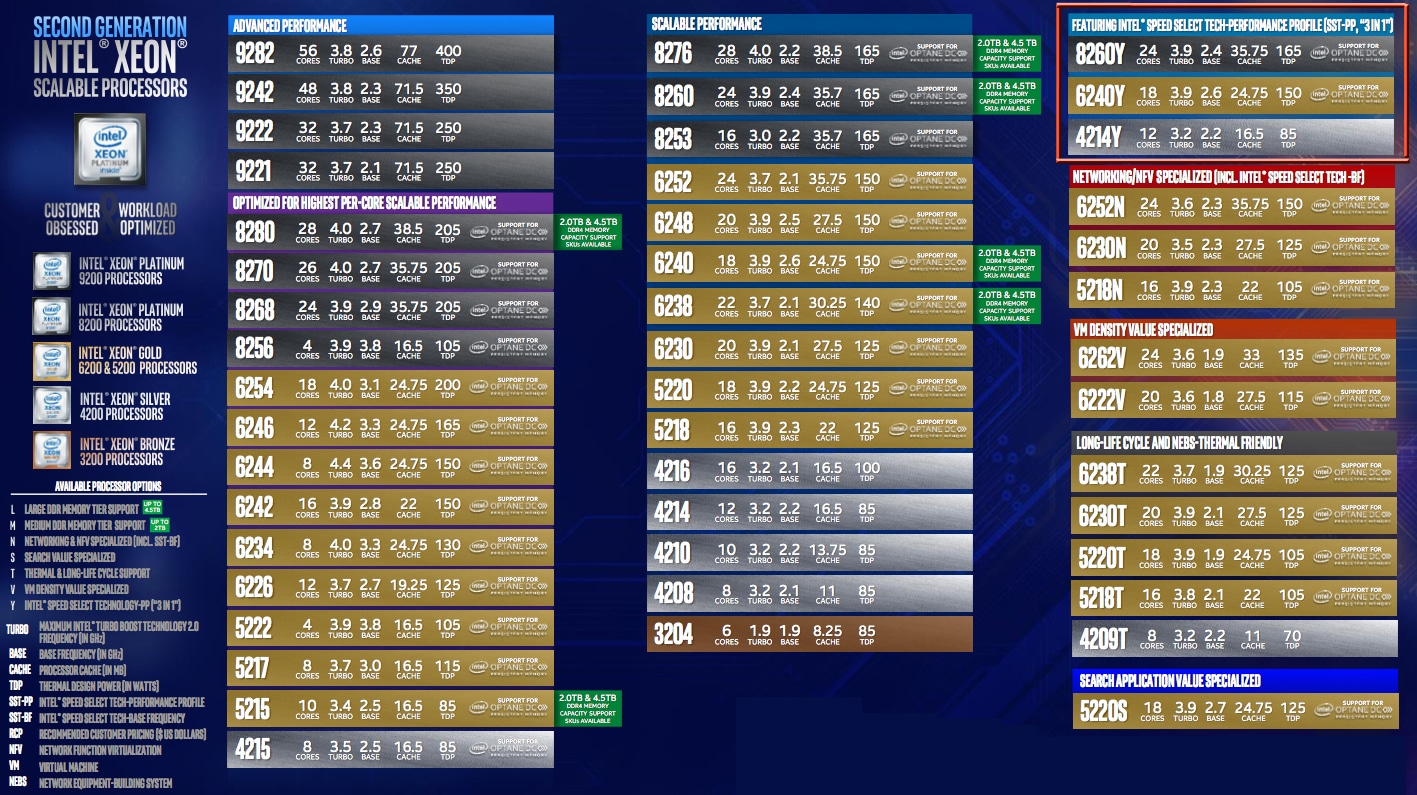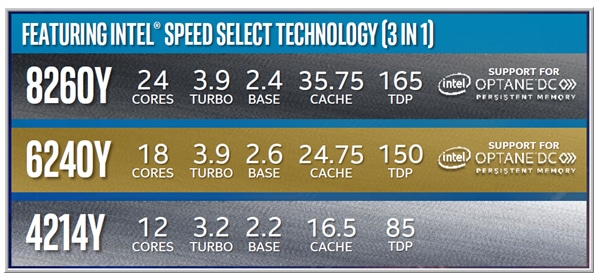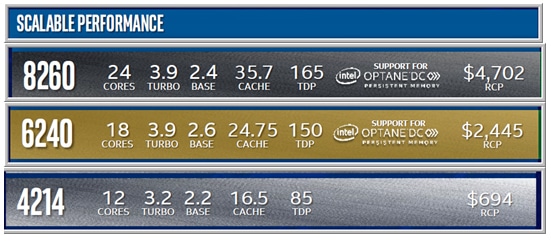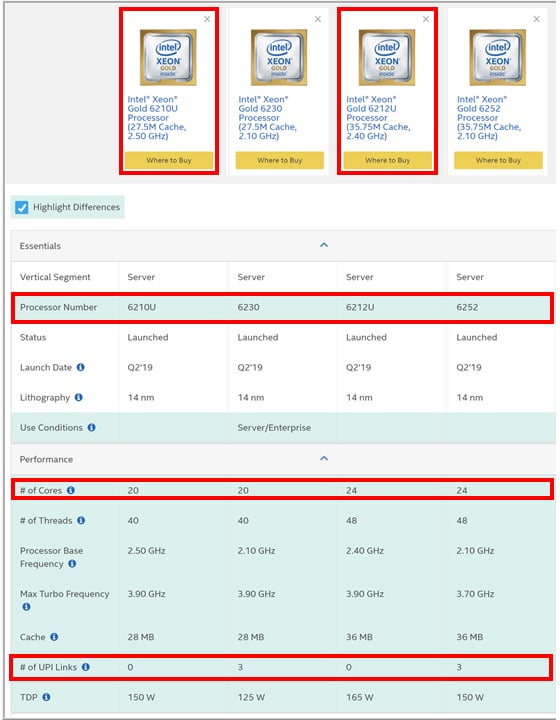In a recent article we discussed Intel’s new virtualization density optimized CPUs (located here). In this article we will discuss two other of Intel’s new “Cascade Lake” Second Generation Xeon Scalable CPUs designed with specific workloads in mind, those are single-socket optimized and Intel Speed Select CPUs.
Intel’s workload optimized CPUs are identified by the letter at the end of the CPU SKU that indicate what it has been optimized for:
- L – Support for large DDR memory (up to 4.5 TB)
- M – Support for medium DDR memory (up to 2TB)
- N – Network-optimized CPUs
- S – Search engine
- T – Thermal and long-life cycle
- V – VM density value
- Y – Speed Select technology
- U – Single-Socket Optimized
Speed Select technology
Speed Select is an interesting technology that allows a system to be rebooted and have the CPU reconfigured into a lower core-count, higher frequency CPU. For example, by using CPUs with Speed Select technology you could use a server to provide virtual desktops (which need many cores) during the day and then at night when they are not using the server for their virtual desktops switch it to a faster CPU with fewer cores to run analytics which tend to be single threaded.
Looking at the list of Intel’s new CPU processors (Figure 1) we see that the Speed Select CPUs are; 8260Y, 6240Y, and 4214Y.
Figure 1- Xeon CPU SKUs
When we compare the CPUs with Speed Select (Figure 2) to CPUs that do not have Speed Select (Figure 3) we notice that although the CPUs have the same number of cores, cache size, base and turbo frequencies and TDP, that the “Y” CPUs are about 12% more expensive than their counterparts.
Figure 2– Speed Select CPUs
Figure 3- Non Speed-Select CPUs
Single-Socket Optimized
Single-Socket Optimized CPUs, as indicated by a “U” on the end of their SKU’s are not shown on Intel’s new CPU processor sheet (Figure 1) but are shown on Intel’s Xeon processor web page. Combing through these web pages we found two U processors; 6212U and 6210U. We than used Intel’s Compare Products Web page to see the differences in these CPUs and CPUs that are do not have the U suffix (Figure3). This shows that the U CPUs have 0 UPI (Ultra-Path interconnects), therefore they can only be used on single-socket motherboards.
Figure 4- Comparing CPUs
Unfortunately, Intel’s price listdoes not show any U processors so we can’t see the price difference between CPUs that can be used in multi-proc systems and those that are limited to single proc systems. However, we conjecture that Intel’s U CPUs will be selling for less than those that can be used in multi-socket systems.
Conclusion
Intel has taken an interesting path with their 2nd generation Xeon processors by tweaking them for specific, abet niche workloads. Speed Select CPUS (Y) are interesting technology, however there is a slight price increase for this capability and it does take a system reboot to have it take effect; it will be interesting to see if the use cases for Speed Select CPUs are strong enough for companies to pay a premium for it and tolerate a reboot needed to switch over from a high core count CPU to a lower core count but faster CPU.
About 80% of servers shipping now are dual-proc, however single-proc servers account for about 10% of the market as remote offices, engineering workstations and some power users require a server/workstations with a single processor, abet with the advanced features found in enterprise class CPUs such Xeon new lines of CPUs; Intel is positioning their Single-Server optimized (U) CPU line at this market.
In the future we hope to do more work with, and further examine, Intel’s workload optimized CPUs to flush out their performance characteristics and work through some of the numbers to see how they best fit into an enterprises computer needs.








 Amazon
Amazon